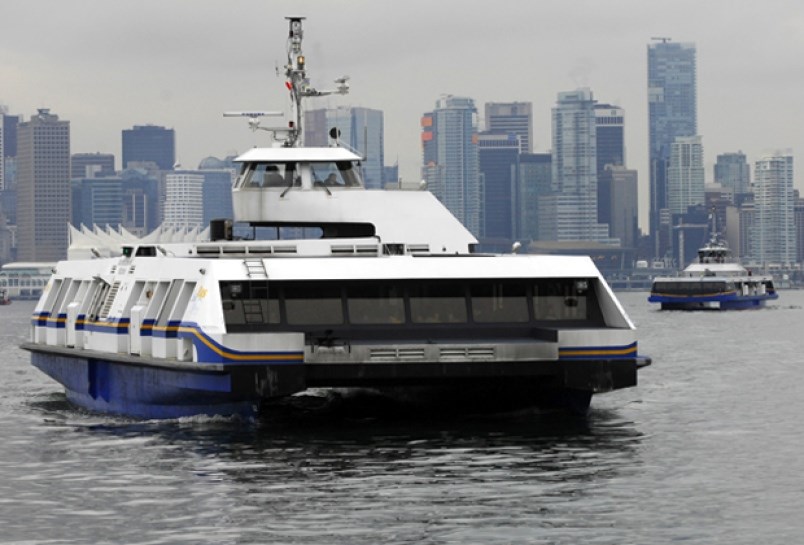More frequent SeaBus crossings and a new B-line bus service running from Dundarave to Phibbs Exchange will be coming to the North Shore following a vote in favour of a 10-year transit plan by regional mayors this week.
The TransLink mayors’ council voted unanimously Wednesday to approve the first $2-billion phase of the plan, which will provide additional bus, SeaBus, HandyDart and SkyTrain service across the region.
On the North Shore, that will mean construction of a new SeaBus, the start of 15-minute SeaBus service in off-peak hours beginning in January 2017 and eventual 10-minute service during rush hours after a new SeaBus is built – likely in 2019. The plan will also result in more frequent buses on the 229, 240, 250, 254, 255, 256 and 257 routes as well as a new B-line bus running the length of Marine Drive and Third Street. The B-line is also likely to start in 2019.
Across the region, the plan includes a 10 per cent increase in bus service and a 15 per cent increase in HandyDart service for people with mobility challenges.
Capital projects that will be funded by the plan include construction of a new $34-million SeaBus and $41 million towards Lonsdale and Phibbs bus exchange upgrades, as well as new rail cars for the SkyTrain.
The federal government will pay $370 million towards the transit plan while the province has committed to $246 million. The rest of the $1.3 billion will come from a combination of an increase in property taxes, gas taxes, sale of surplus TransLink properties, an increase in fares and new development cost charges.
Mayors voted for the plan to get badly needed transit improvements started, despite having misgivings about the way the plan is funded, said West Vancouver Mayor Michael Smith.
Smith said he voted for the plan “with my regional hat on,” despite concerns that the plan offers relatively little for West Vancouver residents while West Van taxpayers will pay much more in property tax towards the plan than those in other areas of the Lower Mainland.
“Our residential taxpayers will pay $13.5 million to TransLink in 2017 in property taxes,” he said. “It’s pretty hard to justify that kind of money. We’re paying such a disproportionate percentage.”
TransLink has said the plan will result in the “average” Lower Mainland homeowner seeing a $3 annual increase in property taxes.
But Smith said because the average West Vancouver house is assessed at $3 million, taxpayers there will be paying five times what a homeowner in Maple Ridge with a property worth $600,000 would pay.
Smith said unless the province agrees to allow other ways to raise money – like a vehicle levy or congestion pricing – it’s uncertain how and if the next phase of the 10-year plan, which involves large capital costs, can be accomplished.
Part of the plan includes conducting a study to come up with options for co-ordinated bridge and road tolling options in the Lower Mainland. But the province has final approval on that and has so far not agreed to any road or bridge tolling.
City of North Vancouver Coun. Craig Keating, who cast a vote on behalf of the city, voiced similar concerns.
Keating said while the North Shore will welcome news of a new SeaBus and B-line bus service, senior levels of government still aren’t paying a fair share of the plan.
“We’re talking about $1.3 billion-plus coming entirely from the region,” he said. “There’s a lot of nice shiny photographs of the prime minister and the premier. But this is a lot of heavy lifting being done by regional councils.”



